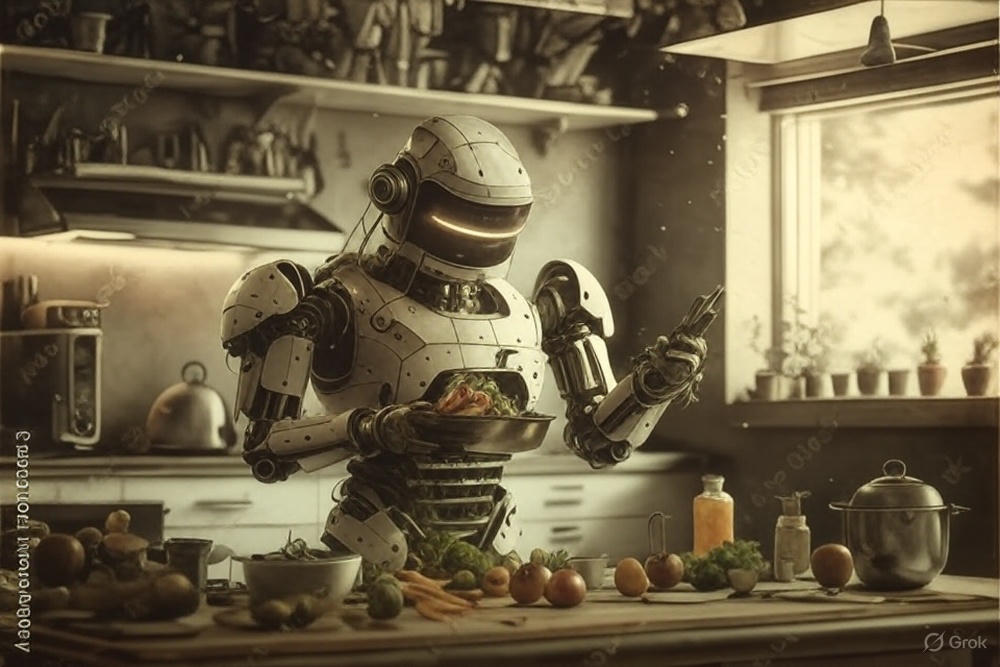Singapore’s Wok A.I. Restaurant: AI Chef Innovation Meets Human Labor Challenges
Introduction
In an ironic twist of the AI revolution, Singapore’s famous Wok A.I. restaurant—celebrated for its robotic chef—has closed one of its outlets due to a shortage of human workers. The news, which exploded across social media after Dexerto’s viral post, reveals a growing truth in the age of automation: robots can’t cook without humans.
The owner persists with the business model, as a second location is still in operationhttps://t.co/Z6LQzkhFE9
— Dexerto (@Dexerto) October 10, 2025
The Viral Tweet That Sparked Debate
On October 10, 2025, Dexerto posted on X (formerly Twitter):
“A Singapore restaurant with an A.I. chef has closed due to lack of human staff. Real people are needed to load and unload ingredients for the robot.”
The tweet—accompanied by photos of the robotic stall—quickly gathered 40,000 views, 930 likes, and 67 reposts, sparking both laughter and reflection. While some users mocked the irony, others used it as an opportunity to discuss AI’s overestimated capabilities.
- @lostwun: “Wow shocker, humans don’t want to work for the guy making a robot his head chef 😭.”
- @thesilverwolfgg: “Maybe this will teach businesses that we overestimated AI. You’ll still need the human factor.”
Inside Wok A.I.: Where Technology Meets Tradition
Founded in 2024, Wok A.I. gained instant fame for its unique approach to Hokkien Mee, a beloved Singaporean noodle dish. Its tagline—“Traditional Taste, Perfected by Technology”—perfectly captured its mission: merging heritage cuisine with futuristic precision.
The star attraction, a robotic chef worth S$14,000 (≈$10,000 USD), could replicate the same “wok hei” smoky flavor hundreds of times consistently. Owner Ang Chip Hong once shared in a viral TikTok:
“Having a robot helps maintain consistency. Even after frying 100 plates, the taste stays the same.”
However, the robot’s efficiency still depended on humans. Tasks like prepping stock, peeling prawns, and loading ingredients required manual labor—showing that AI in kitchens is more assistant than replacement.
Why the Margaret Drive Outlet Closed
The closure of Wok A.I.’s Margaret Drive branch in September 2025 came down to one issue: manpower. Despite offering up to S$5,000 per month (≈$3,900 USD), the restaurant couldn’t hire enough workers to keep operations running.
This highlights Singapore’s broader labor shortage crisis, especially in the F&B sector, where young workers often avoid demanding kitchen jobs. AI can stir-fry noodles, but it can’t peel prawns, refill gas, or handle customers—at least not yet.
Automation vs. Reality: What the Closure Reveals
The shutdown exposes a major reality of AI integration in real-world settings:
- AI enhances efficiency but doesn’t eliminate labor.
- Maintenance, setup, and logistics still rely on humans.
- Customer experience remains a human domain.
Interestingly, Wok A.I.’s second outlet, just 15 minutes away, continues to operate successfully—proof that the AI-assisted model isn’t doomed, just difficult to scale without sufficient staffing.
Globally, similar efforts—like Dubai’s WOOHOO restaurant—use AI for menu curation and ambiance, not full automation. That subtle distinction defines success in AI dining: augmentation, not replacement.
Broader Implications for AI in Food Service
The Wok A.I. case offers valuable lessons beyond Singapore:
- AI is best used for consistency and quality control, not complete autonomy.
- Human chefs bring emotional intelligence and creativity, which robots can’t mimic.
- The economics of AI in small businesses remain challenging due to high setup costs and ongoing manpower needs.
The global takeaway? Automation must evolve with, not against, the human workforce.
Frequently Asked Questions (FAQs)
- Q1. What is Wok A.I.?
- Wok A.I. is a Singapore-based street food stall using a robotic chef to cook traditional Hokkien Mee dishes with consistent quality.
- Q2. Why did one Wok A.I. branch close?
- It shut down due to a severe shortage of human staff, despite offering high wages.
- Q3. Is Wok A.I. still operating?
- Yes, one location remains open and continues to serve customers using its AI cooking system.
- Q4. How much does the Wok A.I. robot cost?
- Approximately S$14,000 (US$10,000).
- Q5. What does this mean for the future of AI in food?
- AI will likely serve as a support tool for consistency and quality, rather than a total replacement for human chefs.
Conclusion
The story of Wok A.I. encapsulates the paradox of our time: technological brilliance limited by human absence. It’s not a failure of AI, but a lesson in balance—innovation works best when humans and machines collaborate, not compete.
Opinion
Wok A.I. isn’t just a restaurant story—it’s a philosophical checkpoint in the automation era. It reminds us that efficiency without empathy is hollow. While AI can replicate flavor, it can’t replicate culture, intuition, or connection.
This closure should provoke reflection, not ridicule. In a world racing toward automation, Singapore’s robotic chef teaches an age-old truth: human presence remains the secret ingredient to progress.


0 comments